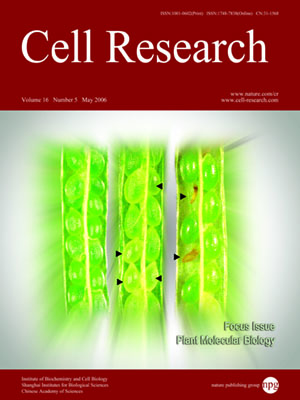
Volume 16, No 5, May 2006
ISSN: 1001-0602
EISSN: 1748-7838 2018
impact factor 17.848*
(Clarivate Analytics, 2019)
Volume 16 Issue 5, May 2006: 427-434
REVIEWS
The brassinosteroid signal transduction pathway
Zhi-Yong Wang,Qiaomei Wang, Kang Chong, Fengru Wang, Lei Wang, Mingyi Bai, Chengguo Jia
1Department of Plant Biology, Carnegie Institution, Stanford, CA 94305, USA; 2Key Laboratory of Photosynthesis and Environmental Molecular Physiology, Institute of Botany, Chinese Academy of Sciences, Beijing 100093, China; 3Department of Horticulture, Zhejiang University, Hangzhou 310029, China
Correspondence: Zhi-Yong Wang(zywang24@stanford.edu)
Steroids function as signaling molecules in both animals and plants. While animal steroid hormones are perceived by nuclear receptor family of transcription factors, brassinosteroids (BR) in plants are perceived by a cell surface receptor kinase, BRI1. Recent studies have demonstrated that BR binding to the extracellular domain of BRI1 induces kinase activation and dimerization with another receptor kinase, BAK1. Activated BRI1 or BAK1 then regulate, possibly indirectly, the activities of BIN2 kinase and/or BSU1 phosphatase, which directly regulate the phosphorylation status and nuclear accumulation of two homologous transcription factors, BZR1 and BES1. BZR1 and BES1 directly bind to promoters of BR responsive genes to regulate their expression. The BR signaling pathway has become a paradigm for both receptor kinase signaling in plants and steroid signaling by cell surface receptors in general.
Cell Research (2006) 16:427-434. doi:10.1038/sj.cr.7310054; published online 15 May 2006
FULL TEXT | PDF
Browse 2013


